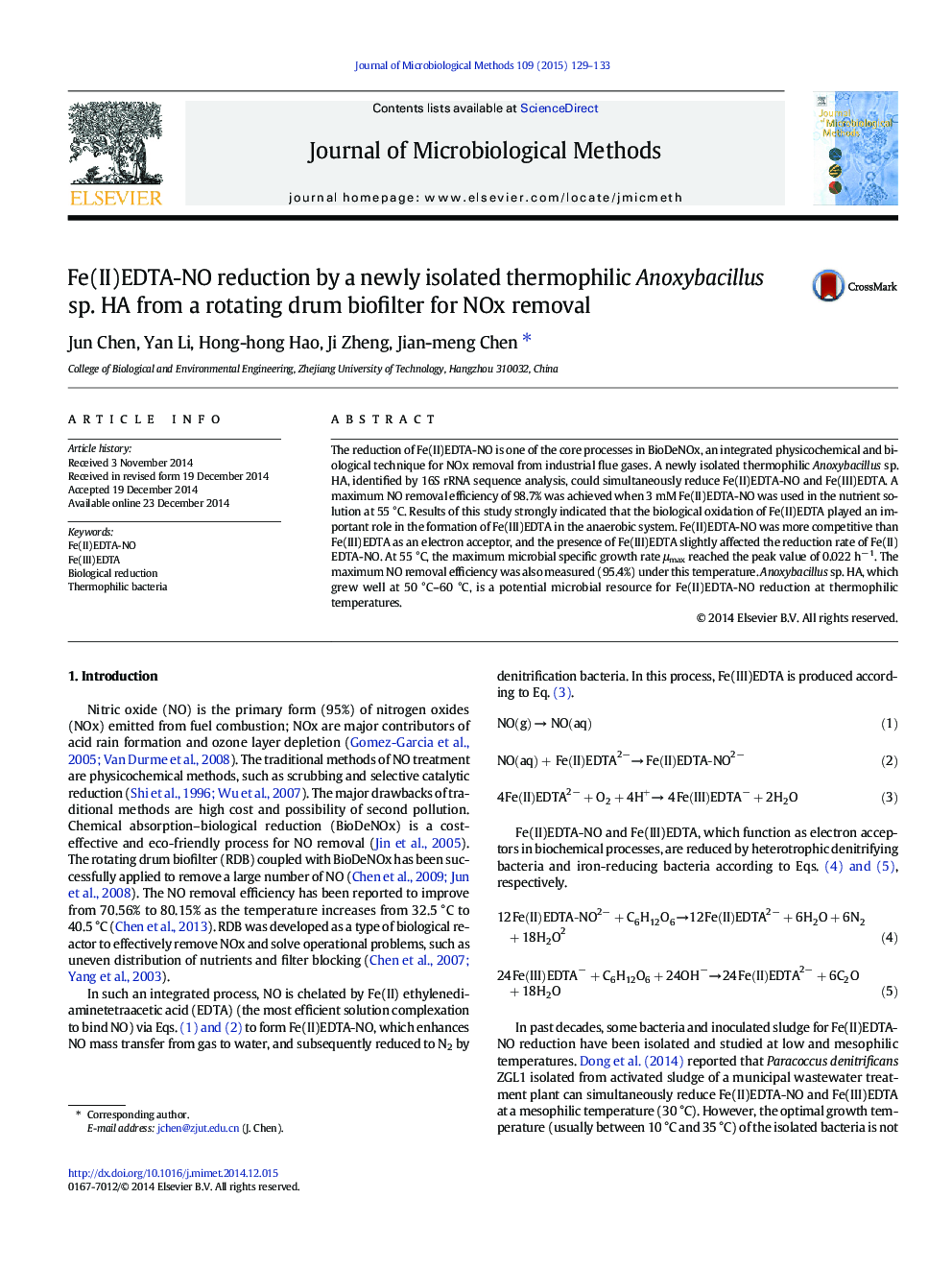| کد مقاله | کد نشریه | سال انتشار | مقاله انگلیسی | نسخه تمام متن |
|---|---|---|---|---|
| 2089898 | 1545934 | 2015 | 5 صفحه PDF | دانلود رایگان |

• Anoxybacillus contaminans can simultaneously reduce Fe(II)EDTA-NO and Fe(III)EDTA
• Strain HA possessed much higher tolerance to high temperature than mesophiles.
• Efficient removal of Fe(II)EDTA-NO at 55 °C under anaerobic conditions.
• Fe(II)EDTA is important to serve as electron donor and the formation of Fe(III)EDTA.
• The strain have a μmax and a max reaction efficiency at 55 °C.
The reduction of Fe(II)EDTA-NO is one of the core processes in BioDeNOx, an integrated physicochemical and biological technique for NOx removal from industrial flue gases. A newly isolated thermophilic Anoxybacillus sp. HA, identified by 16S rRNA sequence analysis, could simultaneously reduce Fe(II)EDTA-NO and Fe(III)EDTA. A maximum NO removal efficiency of 98.7% was achieved when 3 mM Fe(II)EDTA-NO was used in the nutrient solution at 55 °C. Results of this study strongly indicated that the biological oxidation of Fe(II)EDTA played an important role in the formation of Fe(III)EDTA in the anaerobic system. Fe(II)EDTA-NO was more competitive than Fe(III)EDTA as an electron acceptor, and the presence of Fe(III)EDTA slightly affected the reduction rate of Fe(II)EDTA-NO. At 55 °C, the maximum microbial specific growth rate μmax reached the peak value of 0.022 h− 1. The maximum NO removal efficiency was also measured (95.4%) under this temperature. Anoxybacillus sp. HA, which grew well at 50 °C–60 °C, is a potential microbial resource for Fe(II)EDTA-NO reduction at thermophilic temperatures.
Journal: Journal of Microbiological Methods - Volume 109, February 2015, Pages 129–133